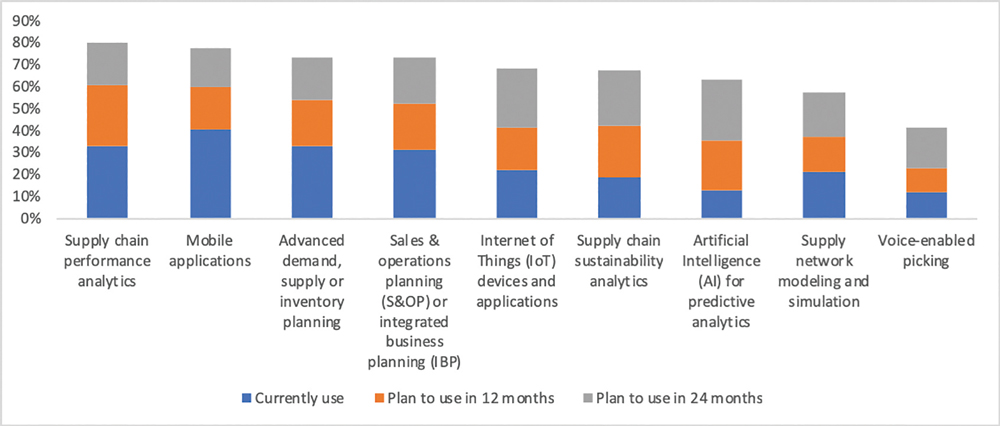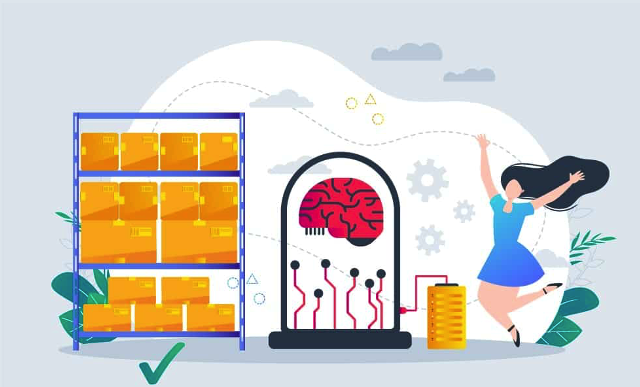Digitally Transforming the Supply Chain
Learn How to Successfully Manage Complex Supply Chains as Technology Moves Forward
In a world where technology evolves faster than companies can adopt and deploy it, firms with complicated supply chains must develop an organizational culture and technical capabilities that empower them to identify, test, adopt, adapt, and implement technologies as quickly as possible. This means creating a culture that looks to innovation to find better ways to achieve outcomes and motivates employees to collaborate and exchange ideas, especially across different departments, roles, and functions.
In a recent SAPinsider survey on “Digital Transformation of the Supply Chain,” prioritizing the use of innovation emerged as a key differentiator: 41% of respondents identified as leaders (those that are ahead of the competition with their digital supply chain strategy) used innovation as a metric of transformation success. In comparison, only 18% of industry average respondents (those equal to or somewhat ahead of the competition) and laggards (those behind the competition) used this metric for success.
Looking forward, technologies such as artificial intelligence (AI), advanced analytics, mobile applications, and Internet of Things (IoT) connectivity, devices, and applications will synergize to create value for various scalable use cases within the supply chain, and supply chain organizations must be able to embrace these types of innovations to succeed. SAP customers can leverage the backbone of their SAP systems to take advantage of these technologies and to run as many experiments and pilots of supply chain management (SCM) applications as possible to quickly identify the solutions that can provide them with end-to-end value at scale.
Elevate the Focus on Cloud-Based Collaboration
SAP designs its software to help customers standardize applications throughout an organization while customizing them to the organization’s needs. In the SAPinsider survey, all identified groups — leaders, industry average, and laggards — showed a tendency to choose customer demands as a priority, but leaders considered multiple drivers and pressures, listening to a broader group of partner stakeholders as well as customers and fulfilling orders with a higher degree of multichannel complexity. Leaders see how tracking and responding to these different drivers and pressures can tie to improved financial performance if they respond by measuring and analyzing supply chain performance. They have also built on a foundation of cleansed and harmonized data by securing it with industry-standard security practices and scaling their processing capabilities with secure IoT devices and applications that leverage their integrated and harmonized architecture.
Based on these findings, supply chain organizations should work with customers, partners, and suppliers to customize their SAP systems to provide visibility into the appropriate tracking and arrival times within the system, to improve response times, and to identify areas of improvement. They should not wait for customers to complain before instituting change. Also, by actively engaging with their customers, partners, and suppliers, organizations can learn more about what other innovations these companies have experienced and witnessed and extract best practices.
Cloud-based platforms can help provide the tools supply chain organizations need to collaborate both internally and externally. Introduced in 2017, SAP Integrated Business Planning provides a cloud-based solution that combines capabilities for sales and operations, demand, response, supply planning, and inventory optimization within the supply chain. SAP Integrated Business Planning serves as a collaboration platform where different departments can view a similar interface for work from their different points of view and run apps appropriate to their roles with harmonized and synchronized operational data. This can help when deploying apps based on other technologies such as AI, IoT data, and advanced analytics. It also integrates deeply with SAP S/4HANA, which allows supply chain organizations to leverage their SAP backbone as part of their SCM implementation.
Dive Headfirst into New Technologies
By communicating and exchanging appropriate data with stakeholders (such as customers, partners, suppliers, employees, shareholders, and technology vendors), organizations can get a pretty good idea of the areas of their business that could improve with the help of new technologies. If they have a cloud-based collaboration platform integrated with their SAP system — such as SAP Integrated Business Planning — and a secure IoT platform, they will be set up to collect data in a secure and integrated way and to use that data to power applications of other new technologies.
Based on the findings from the SAPinsider survey (see Figure 1), as supply chain organizations mature, they will move from investing in technologies such as supply chain performance analytics (28% planning to use in the next 12 months) and sustainability analytics (24% in the next 12 months) to newer technologies such as AI for predictive analytics (51% in the 24 month time frame) and IoT devices and applications (46% over 24 months).

AI apps have an enormous potential for predicting issues before they arise, but machine learning-based predictive analytics requires large volumes of data from a variety of situations and time to recognize patterns in said data. The sooner an organization starts using predictive analytics and training its models, the sooner those models will start providing accurate and helpful insights.
Using new technologies to achieve a “digitally transformed supply chain” is not an end goal, however — businesses should never stop transforming. Supply chain organizations should aim to test, fail, kill, succeed, deploy, and implement technologies as quickly as possible and continuously improve. Toward this end, organizations should aim to have the strategy, platforms, and performance metrics in place to run experiments that can succeed or fail quickly and cheaply before deciding whether to commit and scale.
Learn More
By leveraging the SAPinsider community, SAPinsider research, and resources from SAP, SAP customers are well positioned to adopt and implement AI and other new technologies the right way faster than the competition. Learn more by reading research from SAPinsider — such as the upcoming benchmark report “Digital Transformation of the Supply Chain” — and by visiting SAPinsiderOnline.com.





